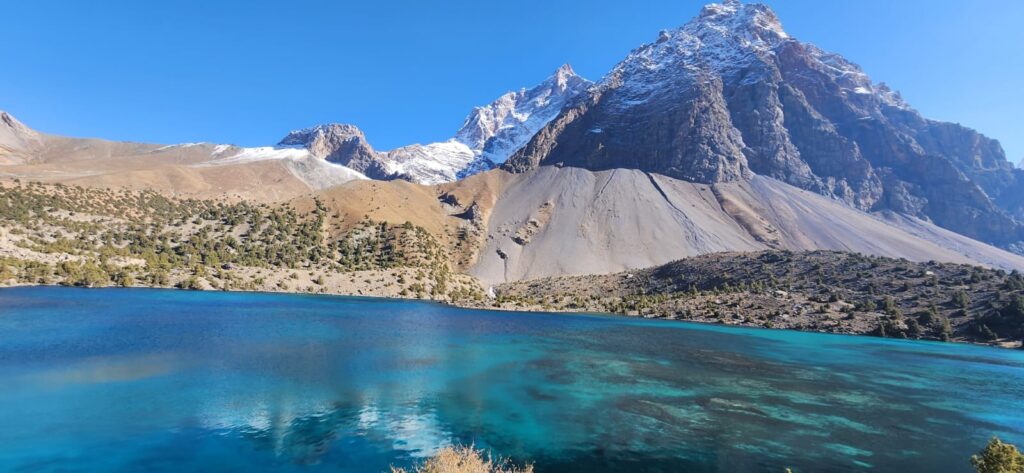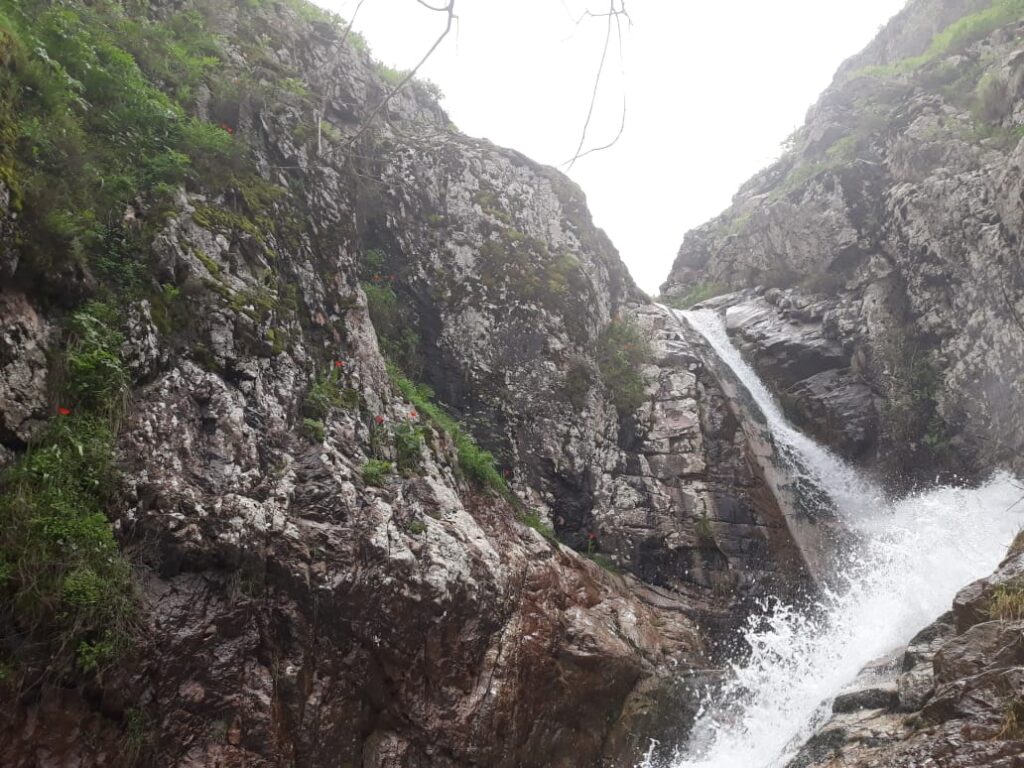The morning light spills over the Fann Mountains, touching icy peaks and then cascading down slopes until it reaches a stretch of water so clear it mirrors clouds and cliffs alike. That lake is Iskanderkul– known as “Alexander’s Lake”, a jewel set deep in Tajikistan’s highlands, both mythic and geological, where glacial waters collect in a basin carved by ancient ice, bridging story and place.
You approach Iskanderkul by winding mountain road, the pavement narrows, forested slopes close in, and then the world opens: the lake appears below, turquoise, contained by steep rock walls. On the shoreline, people pause, cameras in hand, shoes off, sandals dangling. Some launch small boats; others walk along pebbled edges, tossing pebbles into silent depths. The lake is both destination and threshold.
Iskanderkul is more than a scenic marker. It is a water reservoir fed by glaciers. Its basin lies at around 2,200 meters, flanked by peaks rising another thousand meters. Snowmelt from the surrounding ridges pours into streams that converge, feeding the lake’s volume each spring and summer. In years of heavier snowfall, the lake swells; in drier times, its surface recedes slightly. That fluctuation is geography in motion, witnessed by locals who know its moods.
Legends swirl around the lake. One story tells that Alexander the Great paused here, looking upon the peaks and naming the place after himself. Another says the lake hides a submerged city. Children in nearby villages grow up hearing these tales, and tourists arrive in part to see whether myth and water interlace. Yet for many people Iskanderkul is vivid rather than mythic, it is a landscape you can touch, smell, and walk around.
A local fisherman pulls a net by the dock, lifting small trout from cold depths. He says quietly, “This lake gives life- fish, water, air. But you must respect it.” His tone carries weight: the lake is not just scenic, but sustainer. The catch is modest, for regulations limit fishing to preserve ecosystems. That balance between use and protection is a constant tension.
Iskanderkul is a place where geology, hydrology, and human memory converge. The lake holds the imprint of ancient glaciers, the pressure of water cycles, and the narratives of people who walk its shores. As sunlight shifts over its surface, casting silhouettes of cliffs in water, it feels less like a static scene and more like a living portal of mountains making water, and people relating to that making.
Surrounding vegetation gives life to shorelines. Birch and juniper cling on slopes, moss carpets damp cracks, and patches of wildflowers dot hidden coves. Birdsong echoes early morning: white-throated dippers near inflowing streams, wagtails darting along the surface. The lake is an ecological stage, where species adapted to alpine life live with water’s edge.
Downstream, Iskanderkul feeds the Fan Darya and then joins larger river systems; its outflow is part of a journey that touches valleys far away. The lake’s waters move outward, sustaining communities, irrigation canals, and agro-lands. Its role is often silent but vital: a headwater reservoir modulated by geography and climate.
In some seasons, landslides tumble from adjacent slopes, sending debris into shallow bays. These events remind people that steep terrain is never static. One summer after a heavy thunderstorm, villagers noticed new rockfall scars reaching the lake’s edge. They walked along the shore, noting boulders in places previously smooth. The lake absorbs change, adjusting margins, edges, stones.
Remote sensing maps show that the basin is perched within a larger network of glacial cirques and retreating ice patches. Older surveys (Sakai & Sato, 1987) recorded ice extent lines; more recent observations show shrinkage. Some tributary glaciers feeding Iskanderkul have thinned, and their seasonal melt timing is shifting. The lake is a witness to glacier dynamics, a mirror of upstream changes.
Tourism and infrastructure press on the edges. Hotels perch on ridgelines, roads carve into hillsides, trails skirt steep drop-offs. Waste management is imperfect; water bottling plants pump from springs near the inflows. The geography of tourism must reckon with carrying capacity: a delicate balance of letting people walk the landscape without erasing it.
In evening light, the lake reflects clouds, mountains, and the restless sky. A breeze ripples surface water, causing the reflections to bend and shift. For a visitor, standing there feels like encountering both stillness and movement. The place is quiet, but alive with the water pulses, the cliffs loom, the wind whispers.
Walking away down the road, you glance back once more. The lake lies in the hollow between ridges. Its color holds glacier, cloud, rock, and story. For Tajikistan, it is an emblem: a mountain-made lake, storied, useful, scenic, vulnerable. To map it physically, socially, ecologically is to remember that landscapes are made of water, stone, and human attention.
References
- Sakai, A., & Sato, Y. (1987). Glacier surveys, Fann Mountains, Tajikistan. Journal of Japanese Alpine Studies.
- United Nations Development Programme (UNDP). (2010). Mountains of Central Asia: Responses to Glacial Change—Iskanderkul Case Study.
- FAO & Tajik National Reports. (2005). Land Cover and Hydrology of Fann Mountains.








